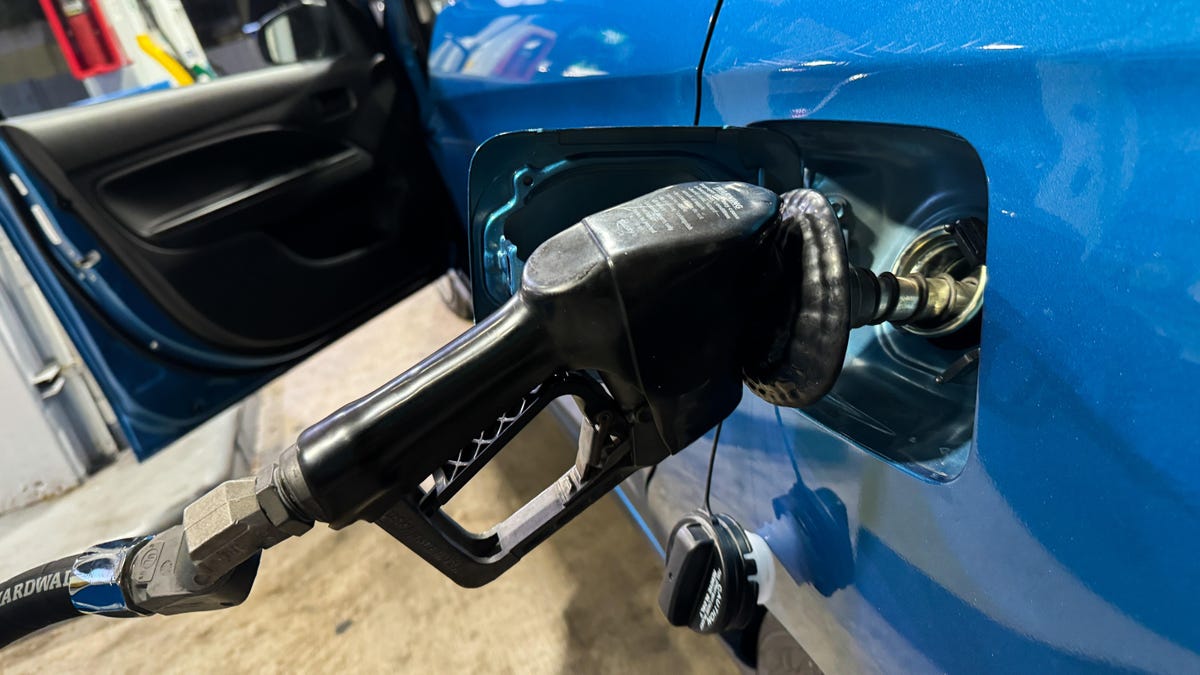

In This Story
Like clockwork, it’s getting less expensive to fill up at the pump in Labor Day’s wake. AAA said earlier this week that the average cost for a gallon hit $3.22, part of a months-long decline for the commodity.
“Gasoline demand and oil costs are low, so pump prices may soon resume a slow descent,” said Andrew Gross, spokesperson for AAA, in a statement from the group’s most recent weekly gasoline market lookahead. “There are 14 states with averages below $3 a gallon, and several more may soon follow.”
Advertisement
If that were to happen, it would be the first time gas prices fell below that mark since May 2021.
Advertisement
Advertisement
On the one hand, there are simple economic reasons that gas gets more expensive in the summer. People drive more to go on vacation or to the beach or camp, and they usually need gas to do that. Data from the Energy Information Administration demonstrates how demand jumps during the summer months.
Advertisement
On the other hand, there are also chemical reasons for the jump.
“Environmental regulations require the specifications of motor gasoline to be altered across seasons,” reads a 2011 article in The Energy Journal, an academic publication. “In particular, [the commodities futures-focused New York Mercantile Exchange (CME)] defines three different commodity specifications; the Summer grade (delivered from April to mid September), the Winter grade (November to the end of February), and the intermediate specification (delivered in the two transition periods). The shift in product specification requires refiners to clear inventory and adjust their production schedules prior to the change in the product specification. Together [with] limited substitutability in the refining process, this regulatory requirement constrains refiners’ production and storage decisions.”
Advertisement
Translated into plain English, gasoline providers literally run out of winter gasoline and engage in a mad dash to secure summer gas before a crush of elevated demand. Or, translated into corporate earnings call-ese, as refiner Par Pacific’s (PARR) CEO William Monteleone put it in May: “As we approach the summer driving season, you’re going to see large refining incentives to produce gasoline.” When the fall transition happens, refiners are better able to take their time.
America vs. OPEC and ICEs vs EVs
There are some factors reducing gas demand even more quickly than usual. The U.S. crude oil industry has been pumping Texas tea from the ground at record levels for years now. That surge in supply has crowded out foreign producers, especially the OPEC cartel. Combined with worries about a real estate slump dragging down expectations for gas usage in China, the key ingredient for gasoline is also priced lower than it’s been in years.
Advertisement
In the United States, electric vehicle sales have been slower than the automotive industry imagined even a couple years ago. EVs are for the most part still more expensive up front than internal-combustion-engine cars and the infrastructure to support them can still be hit-or-miss, so their growth has waned in recent months as consumers wait out a more ideal transition scenario.
But in countries like China, which has a far more robust menu of cheap EVs than in the U.S. (to the chagrin of American manufacturers), the shift has been much more pronounced. Electric cars are about half of the overall market there. Here, it’s less than a tenth of the market. The International Energy Agency said that hiccups in the U.S. market shouldn’t obscure longer-term trends worldwide.
Advertisement
“Increased use of EVs, emerging clean energy technologies and more expansive efficiency policies are combining to chart a much slower growth trajectory for oil demand, plateauing towards the end of our 2023-2030 forecast period,” the organization said in its “Oil 2024″ crude market forecast.
That’s going to create some headaches for the U.S. gas station industry down the line, the IEA says: “Refiners will need to progressively modify their product output to meet divergent trends for distillates as gasoline demand falls amid an increase in the market share of electric vehicles.”
 Print
Print


